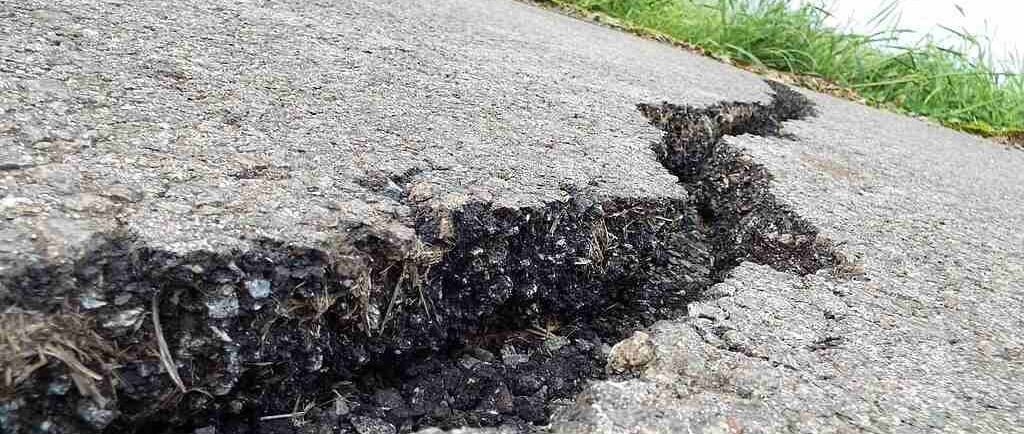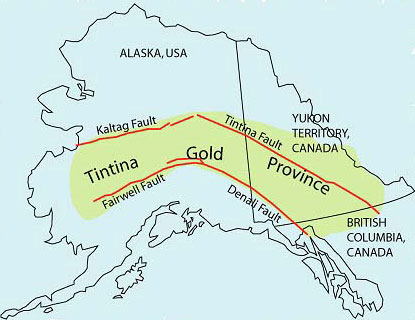The Tintina fault: A geological giant awakening in the Canada
The Tintina Fault is a colossal geological structure in western North America, stretching approximately 1,000 kilometers (621 miles) from Flathead Lake, Montana, through Canada's Yukon Territory and terminating in the center of Alaska.
DIGICULT
7/30/2025


The Tintina fault: A geological giant awakening in the Canada
The Tintina Fault is a colossal geological structure in western North America, stretching approximately 1,000 kilometers (621 miles) from Flathead Lake, Montana, through Canada's Yukon Territory and terminating in the center of Alaska. It is a major right-lateral strike-slip fault, meaning the blocks of land on either side of the fault move horizontally past each other, with the block opposite an observer moving to their right. Historically considered dormant for millions of years, recent discoveries have revealed that the Tintina Fault is not only active but is accumulating strain at a slow rate, potentially posing a significant seismic hazard to the region.
For decades, the Tintina fault was considered inactive, with its last major activity believed to have occurred around 40 million years ago. This perception was largely due to a lack of significant seismic events in recorded history and the challenge of identifying evidence of ancient earthquakes in heavily forested terrain. However, the development of high-resolution topographic data from sources such as satellites, aircraft and drones has enabled scientists to re-examine the fault and uncover its hidden past.
One of the key discoveries was the identification of fault scarps - linear features on the Earth's surface caused by earthquakes – located within 20 kilometers (12 miles) of Dawson City. Researchers observed that ancient glacial landforms, dating back 2.6 million years, were laterally offset by up to 1000 meters across the fault scarp. Similarly, glacial landforms from a more recent period, approximately 132,000 years old, showed a lateral offset of 75 meters. These findings indicate that the Tintina fault has experienced multiple large earthquakes throughout the Quaternary period, which spans the last 2.6 million years to the present.
Despite its history of activity, landforms dating back 12,000 years show no signs of offset, suggesting that the fault has been quiet for a considerable period. However, this long period of dormancy is not necessarily a sign of safety. In fact, it could indicate that the fault is nearing a critical point where accumulated strain will be released in a major earthquake.
The Tintina fault is estimated to be accumulating strain at a rate of 0.2 to 0.8 millimeters per year. While slow, this rate over 12,000 years of inactivity could mean a significant build-up of stress, potentially a slip deficit of at least 6 meters. Experts warn that the release of this strain could lead to a powerful earthquake of magnitude 7.5 or higher. Such an event could significantly impact Dawson City, which is near a historically active segment of the fault, and damage critical infrastructure like highways and mines. The area's susceptibility to landslides further increases the potential for damage.
The confirmed activity of the Tintina fault requires updating Canada's seismic hazard models. Although the current National Seismic Hazard Model accounts for large earthquakes in the central Yukon, it doesn't recognize the Tintina fault as a specific source. The new data will be incorporated to inform building codes and engineering standards and will be shared with local authorities to improve earthquake preparedness.
The Tintina fault, once considered inactive, is now recognized as a potential source of major earthquakes in Western North America. Its extended period of inactivity suggests a significant build-up of strain, raising concerns about future seismic activity. While earthquake prediction remains challenging, understanding the Tintina fault's potential is vital for improving preparedness and reducing risks in the affected regions. The Tintina fault highlights the importance of ongoing research and reassessing seismic hazards, as seemingly dormant features can pose hidden threats.
(This is an AI generated response feed; AI responses may include mistakes. Readers are encouraged to view at their own discretion.)


Ideagiri: Online platform for Education: Govt Colleges and Universities, Govt Jobs, Exams, Internships, Business, Finance, Technology, DigiCult and more - Ideagiri.com
Nocont@ideagiri.com
© 2025. All rights reserved.
